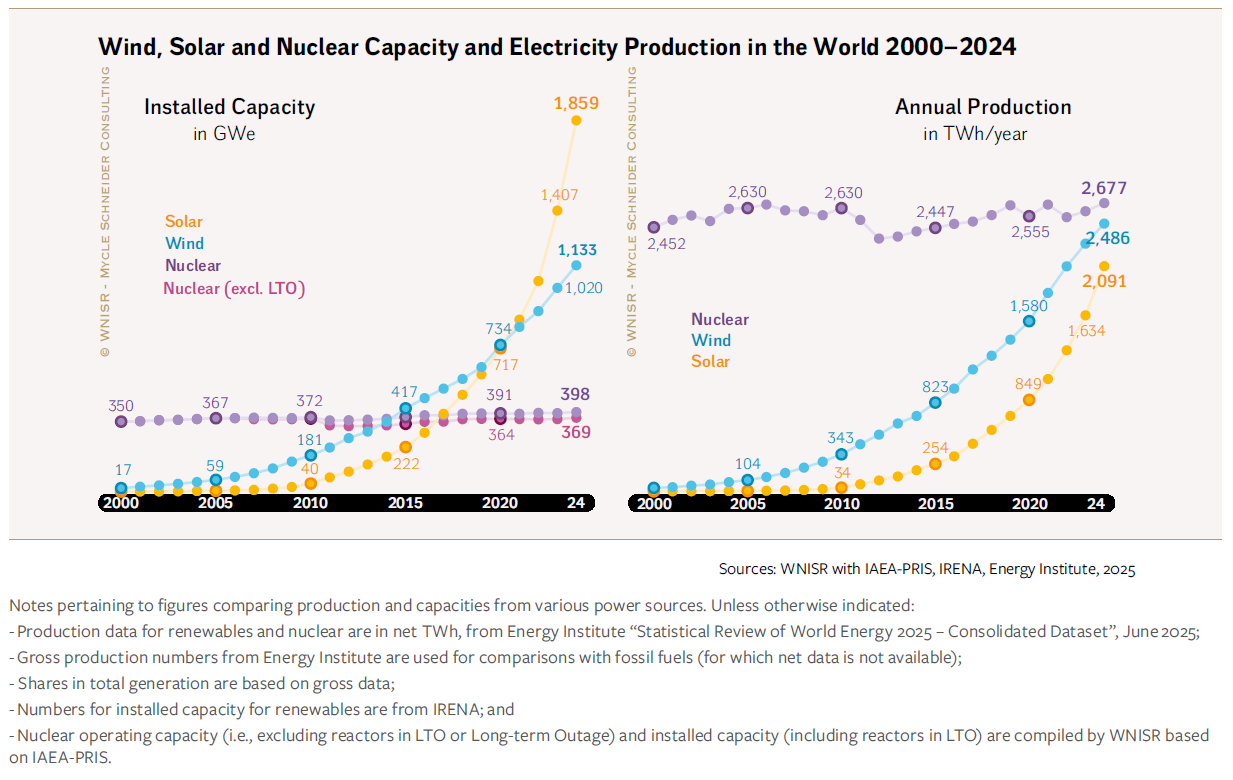The “World Nuclear Industry Status Report 2025” (WINSR2025) was released last week and provides a fascinating, and surprisingly negative, perspective on the role of nuclear in the future power mix.
Three ideas caught my attention. The first was this aggregation of transitions within the energy system: fossil fuels to electricity, centralized to distributed power, dispatchable to variable, public supply to autonomous prosumers, monopolies to networks of millions, central planning to market interactions, and top-down to bottom-up control.
While I may debate some of the projected consequences, the themes themselves read right to me. Together, these transitions are driving a total transformation of the power system as we currently know it.
The highlighted transitions are, in part, a consequence (and driver) of innovation within a subset of technologies supporting renewables. One result is LCOEs for key renewable technologies are the cheapest available:

Combined with policy support, that has translated into global annual investments into renewables that are roughly an order of magnitude greater than nuclear:

Solar and wind capacity (and generation) are on track to surpass nuclear soon:

Of course, LCOEs capture cost, not reliability. On this the report notes progress on storage and power electronic technologies. The author’s assessment points to a rapidly improving and more competitive technology stack versus nuclear going forward, even after incorporating reliability (the table below highlights some of the key trends, specifically comparatively positive trends for renewables + storage versus nuclear).

The net result is a view that the energy system is being transformed in a way that exposes the weakness of nuclear and makes it less competitive. Specifically, the stable baseload generation profile nuclear offers lacks precisely the short-term flexibility that an increasingly renewable heavy grid demands. Further, planned (and unplanned) outages at these facilities mean their capacity must be duplicated to meet the demands of discerning loads like AI data centers.
To quote the authors:
Proposing nuclear power as a component in a firm power energy mix with strongly fluctuating renewable power, however, neglects its weak points. For technical and economic reasons, nuclear plants do not provide the type of flexible, dispatchable power that can fill the gaps between solar power peaks. They need flexibility from other sources for bridging considerable planned and unplanned outages and for buffering between changing demand and their inflexible full-load operation. The cost of their baseload electricity is more expensive than the ultra-flexible combination of renewables-plus-storage-plus-flexible demand.
This conclusion, at a time when nuclear is seeing a resurgence, was surprising to say the least.

